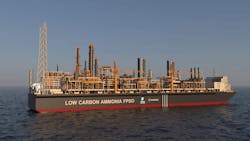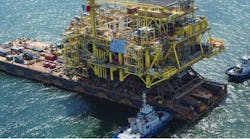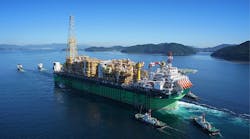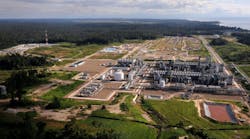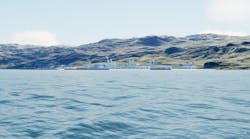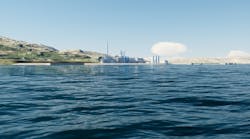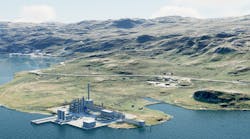What is blue ammonia?
Blue ammonia is a low-carbon method of producing ammonia. It is produced by combining hydrogen, which is derived as a byproduct of carbon dioxide that has been captured and stored, with nitrogen.
Definition by ABS
ABS has issued approval in principle (AiP) to MODEC and Toyo Engineering for a blue ammonia FPSO.
This is designed to produce and store blue ammonia by using associated gas supplied by nearby oil and gas FPSOs, previously reinjected into the reservoir. Blue ammonia is seen as an alternative fuel and hydrogen carrier in the new energy landscape.
Also onboard is a carbon capture and storage (CCS) facility that can capture CO2 generated during the conversion of associated gas to ammonia (NH3), and CO2 from gas turbine generators.
This should help minimize CO2 emissions from the FPSO during ammonia production.
The hull that will store and offtake the produced ammonia was a co-development with Mitsubishi Shipbuilding.
MODEC was responsible for the FPSO’s overall layout, hull design and mooring technology, with TOYO applying its experience in the ammonia production process and FPSO equipment designs.
The partners plan to mature the concept to address issues related to commercialization.
To learn more about blue ammonia projects in the offshore industry...
Additional resources on blue ammonia:
Our sister publication Oil & Gas Journal has also covered blue ammonia projects in the oil and gas industry:
About the Author
Jeremy Beckman
Editor, Europe
Jeremy Beckman has been Editor Europe, Offshore since 1992. Prior to joining Offshore he was a freelance journalist for eight years, working for a variety of electronics, computing and scientific journals in the UK. He regularly writes news columns on trends and events both in the NW Europe offshore region and globally. He also writes features on developments and technology in exploration and production.
